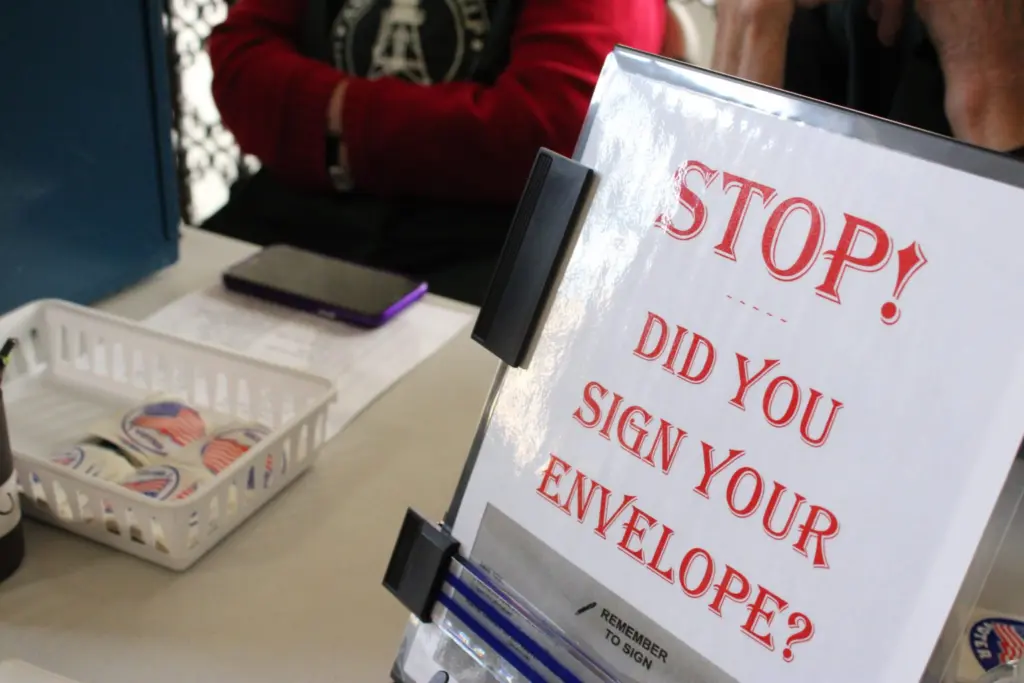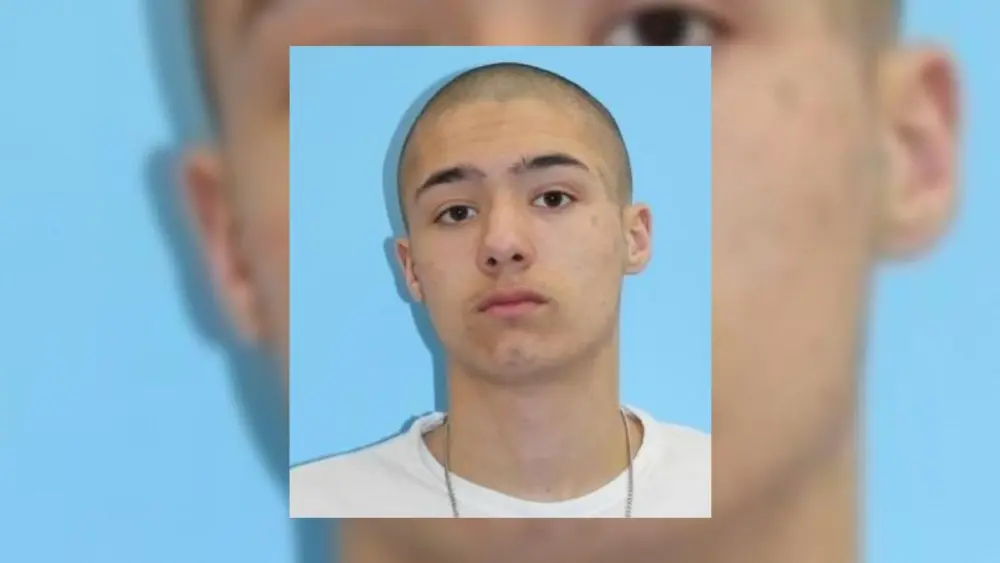HELENA, MT – A new Montana law requiring a voter’s birth year has led to county election officials rejecting an abnormal number of ballots for this year’s local elections.
Ballots sent to Montana voters this election year look a little different than in years past. Underneath the ballot envelope’s signature line are four rectangles, with instructions to fill in a voter’s birth year.
The change comes from a law passed by the 2025 legislature that was intended to increase voter security by adding another layer of verification to absentee ballots.
In one county that had a practice run with the requirement, voters have adjusted, although a county official said the federal election next year will require significant outreach.
However, the law also gives voters an additional chance to make a mistake, and some counties are seeing rejection rates soar as a result.
“This was our concern at the Legislature, that this law could cause otherwise valid ballots to be rejected, and unfortunately we’re just seeing it come to fruition,” Missoula County election administrator Bradley Seaman told the Daily Montanan on Wednesday. “We’ve got about a 4% rate of rejected ballots, up from just fractions of a percent we normally see. We have a very high rejection rate this year, and the main reason is people are missing the dates.”
Seaman said that as of Wednesday, with another week and a half to go before Election Day, his office in Missoula had rejected 467 ballots — 357 of them due to a missing or incorrect birth year.
By comparison, in Missoula county’s 2023 municipal election, only 142 total ballots were rejected due to a missing or mismatched signature, out of nearly 25,000.
“It’s critical that every vote matters,” Seaman said, pointing to the previous city council election where one race ended in an exact tie.
If a ballot is rejected, a county elections office will send a letter to the voter’s address, and if possible, send an email or call them. Once notified, voters are able to resolve issues with their ballot until 5 p.m. the day after the election, either in person, or by mail or email, by following the directions sent by election officials.
Montana voters can check the status of their ballots by going to myvoterpage.com, which Seaman recommends everyone do, regardless of how sure they are that their ballot was correctly filled out.
While Missoula County is seeing a higher than normal rejection rate, not all counties are in the same boat.
In Lewis and Clark County, the elections department, and voters, benefitted from having a “soft launch” of the birth year requirement during a school bond and city of Helena primary election in September, and widespread voter outreach.
Connor Fitzpatrick, the county’s elections supervisor, said voters in the September election were instructed to put their birth year on their ballot envelope, even though the law didn’t take effect until Oct. 1. Missing dates, in that case, didn’t mean ballots would be rejected, but it gave voters the opportunity to practice.
In addition, the week prior to mailing out ballots, the department sent a mailer to every address involved in the election “as a reminder for city of Helena folk, and to bring it to the attention of anyone not in Helena, that this new law is fully implemented and in play this election,” Fitzpatrick said.
As of Thursday, Fitzpatrick said his department had only rejected 15 ballots, which he attributed to the soft launch and directed outreach by the elections team.
“Anytime you change the process for voters, even if it’s a minor change, you’re going to want to find a way to tell them about it,” Fitzpatrick said. “And this is more than a minor change.”
“At the end of the day, we want you to vote, that’s why we’re here,” he added. “But we don’t want to have to deal with a lot of folks coming in at the last minute saying ‘goodness gracious, my ballot was rejected because of this new item.’”
Fitzpatrick said that the double-verification requirement added a little bit of time to ballot processing — a few minutes for each batch — but said that since this year is only a local election, it’s a smaller lift for the department to begin with.
“A few years from now, in the next presidential election, that will be a good question to ask again, and see if we know how much more time this could add,” Fitzpatrick said.
In Yellowstone County, where the most ballots have been sent out to voters, election officials told the Daily Montanan that of the 9,700 ballots returned as of Wednesday, 5.6% had been rejected — up from 0.8% in 2023.
“For those who did not complete the requirement, it adds an extra burden to them to have to fix it,” said Dayna Causby, the county’s new election administrator. “And it’s a strain on our office as well. Our office is having to reach out to a much larger number of them than before.”
Flathead County, which is conducting its largest all-mail election ever, said they’re seeing ballots returned at an extremely slow pace. Of the roughly 1,100 received through Wednesday, about 1.5% were rejected. That’s about twice the rate seen during the 2024 election, though the election administrator noted that last year was a presidential election so it’s not a perfect comparison.
Strengthening election integrity
House Bill 719 was carried by Rep. Braxton Mitchell, R-Columbia Falls at the request of the Secretary of State’s office.
Mitchell couldn’t be reached for comment on Thursday, but said during the Legislature that the law is a “common-sense practice,” that aligns absentee voting with in-person requirements. The bill is aimed at increasing voter confidence, reducing errors and preventing fraud, he said.
Montana has had just two known cases of election fraud since 1997, according to the Heritage Foundation’s election fraud tracker.
In May, the law was challenged in Lewis and Clark District Court by two organizations, Big Sky 55+ and Disability Rights Montana, which allege the law is unnecessary and adds a hurdle to the process that will disenfranchise voters.
More than 80% of Montanans vote using absentee ballots, all of whom would be subject to the new requirement, the lawsuit states, and have more chances for error.
“Researchers found that, as the number of ‘verification’ requirements increases, so do ballot rejection rates,” the lawsuit states. According to an MIT study, states that just require a signature verification have an average rejection rate of 0.77%; but having two verification requirements increases the rejection rate 2.5 times.
“Ultimately, in its effort to fix a non-existent problem, HB 719 creates a problem that is very real: the exclusion of qualified voters,” the suit states. “And while it was vaunted by its proponents as an election integrity measure, HB 719 undermines democracy in Montana by excluding qualified voters from the process.”
No action has been taken by the district court on the lawsuit yet, and the law remains in place.
Daily Montanan is part of States Newsroom, a nonprofit news network supported by grants and a coalition of donors as a 501c(3) public charity. Daily Montanan maintains editorial independence. Contact Editor Darrell Ehrlick for questions: info@dailymontanan.com.





